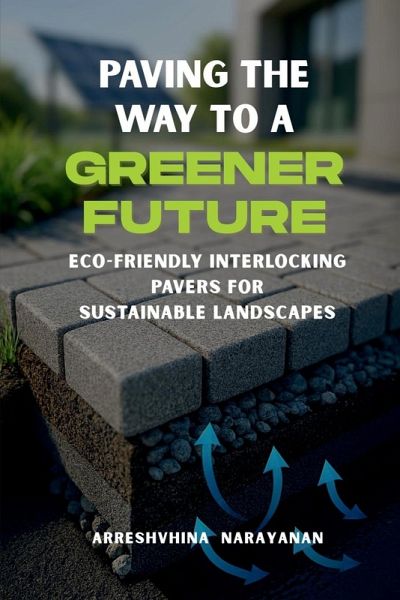
Paving the Way to a Greener Future
Eco-Friendly Interlocking Pavers for Sustainable Landscapes
Versandkostenfrei!
Versandfertig in über 4 Wochen
24,99 €
inkl. MwSt.

PAYBACK Punkte
12 °P sammeln!
What if a paving stone could help cool a city, reduce floods, cut carbon-and be reused when the city evolves? In Paving the Way to a Greener Future, civil engineer and sustainability strategist Arreshvhina reimagines one of the most common elements in the built environment: the concrete paver. This isn't just a manual. It's a full-spectrum exploration of how paving systems-when designed with intelligence and purpose-can become vital tools for climate resilience, water sensitivity, circular construction, and long-term performance. With 17 years of hands-on experience, the author guides readers ...
What if a paving stone could help cool a city, reduce floods, cut carbon-and be reused when the city evolves? In Paving the Way to a Greener Future, civil engineer and sustainability strategist Arreshvhina reimagines one of the most common elements in the built environment: the concrete paver. This isn't just a manual. It's a full-spectrum exploration of how paving systems-when designed with intelligence and purpose-can become vital tools for climate resilience, water sensitivity, circular construction, and long-term performance. With 17 years of hands-on experience, the author guides readers through the engineering, material science, and systems thinking that make sustainable paving not only possible-but essential. Covering topics such as: Low-carbon manufacturing and recycled aggregates Permeability, SRI performance, and algae resistance Durability under dynamic loads and environmental exposure Modular design, lifecycle planning, and circular reuse Environmental product declarations (EPDs) and green certifications This book is ideal for civil engineers, architects, planners, contractors, infrastructure strategists, and sustainability professionals looking to align hardscape design with environmental goals. Whether you're specifying your next project or shaping the policies of tomorrow's cities, this book offers a new way to think about surfaces-not as static layers, but as engineered systems that serve people, planet, and purpose.














